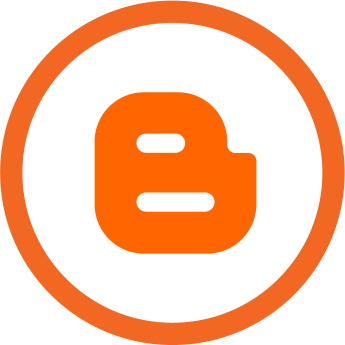Addressing persons in conversation and in letters
This blog post is about addressing people in Dutch, in letters and e-mails and in conversation. You are used to say you to everybody, but in the Middle Ages one used to say thou in a familiar context and ye more formally. In Dutch this distinction is still made. To family and friends as well as youngsters, say to around 20, you say "jij", or "je". To older people you don't know well you say "u". In former days children said "u" to their parents, but nowadays it is usually "je". The pronoun "u" was once "Uw edele", something like "your grace", so a third-person form, which "u" still is. Let's practice: "You have a nice bicycle" is either "Je hebt een mooie fiets" or "U heeft een mooie fiets". "Your bicycle is nice" is either "Jouw (je) fiets is mooi" or "Uw fiets is mooi". While speaking to several persons you can still say "you", but Dutch "jij" or "je" is "jullie" while "u" remains the same: "What a big dog you have" is "Wat een grote hond hebben jullie" or "wat een grote hond heeft u"; however, it is getting accepted when you would say to two unknown people walking a dog: "Wat een grote hond hebben jullie".
While shopping
Upon entering a shop, a "winkel", you might say "Good day": "Goededag", or simply "Dag" or "Hallo". Or nothing because a shop-assisstant has approached you rapidly with a "Goedemorgen" or "Goedemiddag, kan ik u helpen", "can I help you? And you may answer, for example: "ik zoek een paar schoenen", " I am looking for a pair of shoes". If you indeed bought something you will look for a place to pay and either ask "Kan ik met mijn creditcard betalen", "Can I pay with my creditcard", or pay cash. At some point the assistant will say "Dank u", "Thank you" and you may say "Tot ziens", "See you", or more colloquially "Dag". If what you bought is big or heavy you could ask "Kunt u dit thuisbezorgen", "Could you deliver it"
Writing a letter
A letter will generally begin with Dear ... mr. X, mrs. Y, dr. Z. etc., assuming you know the name of the person you are writing to. In Dutch this will be "Geachte heer X", "Geachte mevr. Y", "Geachte dr. Z". In case you know the person reasonably well, but would use "u" and not "you" in speaking, you may write "Beste mijnheer X", "Beste mevrouw Y" , "Beste dr. Z". Otherwise you will write: "Beste Peter", "Beste Emma" (to use two names with identical spelling in English and Dutch). To family and very good friends, where you would start with "My dear Peter", "Darling Emma", you would write "Lieve Peter", "Lieve Emma". To finish a letter to a person you called "Geachte" you would write "Hoogachtend" (similar to yours faithfully, respectfully), to "Beste mijnheer X" would fit "Met vriendelijke groeten" ("Kind regards"), "Beste Emma" could be combined with "Hartelijke groeten" ("Best regards") and "Lieve Peter" would be matched by "Hartelijke groeten" or "liefs" ("With love"), or maybe "veel liefs" (veel meaning much).
Thank you for your attention, "Dank jullie voor jullie aandacht".
This blog post is about addressing people in Dutch, in letters and e-mails and in conversation. You are used to say you to everybody, but in the Middle Ages one used to say thou in a familiar context and ye more formally. In Dutch this distinction is still made. To family and friends as well as youngsters, say to around 20, you say "jij", or "je". To older people you don't know well you say "u". In former days children said "u" to their parents, but nowadays it is usually "je". The pronoun "u" was once "Uw edele", something like "your grace", so a third-person form, which "u" still is. Let's practice: "You have a nice bicycle" is either "Je hebt een mooie fiets" or "U heeft een mooie fiets". "Your bicycle is nice" is either "Jouw (je) fiets is mooi" or "Uw fiets is mooi". While speaking to several persons you can still say "you", but Dutch "jij" or "je" is "jullie" while "u" remains the same: "What a big dog you have" is "Wat een grote hond hebben jullie" or "wat een grote hond heeft u"; however, it is getting accepted when you would say to two unknown people walking a dog: "Wat een grote hond hebben jullie".
While shopping
Upon entering a shop, a "winkel", you might say "Good day": "Goededag", or simply "Dag" or "Hallo". Or nothing because a shop-assisstant has approached you rapidly with a "Goedemorgen" or "Goedemiddag, kan ik u helpen", "can I help you? And you may answer, for example: "ik zoek een paar schoenen", " I am looking for a pair of shoes". If you indeed bought something you will look for a place to pay and either ask "Kan ik met mijn creditcard betalen", "Can I pay with my creditcard", or pay cash. At some point the assistant will say "Dank u", "Thank you" and you may say "Tot ziens", "See you", or more colloquially "Dag". If what you bought is big or heavy you could ask "Kunt u dit thuisbezorgen", "Could you deliver it"
Writing a letter
A letter will generally begin with Dear ... mr. X, mrs. Y, dr. Z. etc., assuming you know the name of the person you are writing to. In Dutch this will be "Geachte heer X", "Geachte mevr. Y", "Geachte dr. Z". In case you know the person reasonably well, but would use "u" and not "you" in speaking, you may write "Beste mijnheer X", "Beste mevrouw Y" , "Beste dr. Z". Otherwise you will write: "Beste Peter", "Beste Emma" (to use two names with identical spelling in English and Dutch). To family and very good friends, where you would start with "My dear Peter", "Darling Emma", you would write "Lieve Peter", "Lieve Emma". To finish a letter to a person you called "Geachte" you would write "Hoogachtend" (similar to yours faithfully, respectfully), to "Beste mijnheer X" would fit "Met vriendelijke groeten" ("Kind regards"), "Beste Emma" could be combined with "Hartelijke groeten" ("Best regards") and "Lieve Peter" would be matched by "Hartelijke groeten" or "liefs" ("With love"), or maybe "veel liefs" (veel meaning much).
Thank you for your attention, "Dank jullie voor jullie aandacht".




